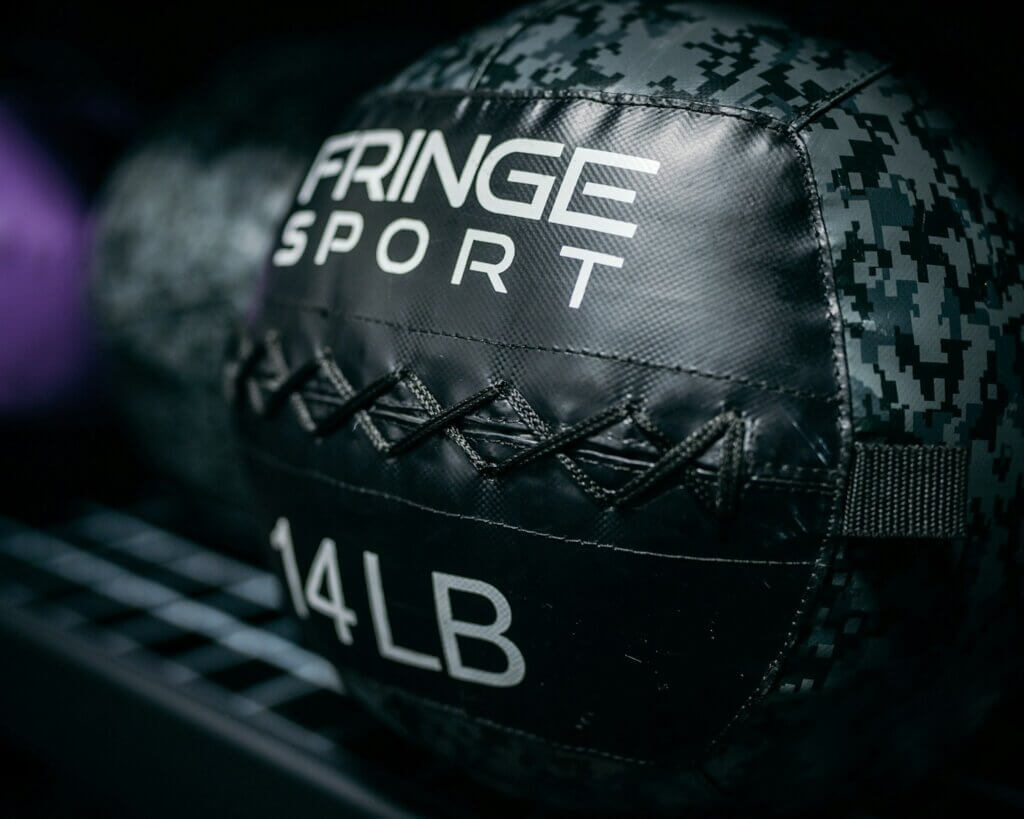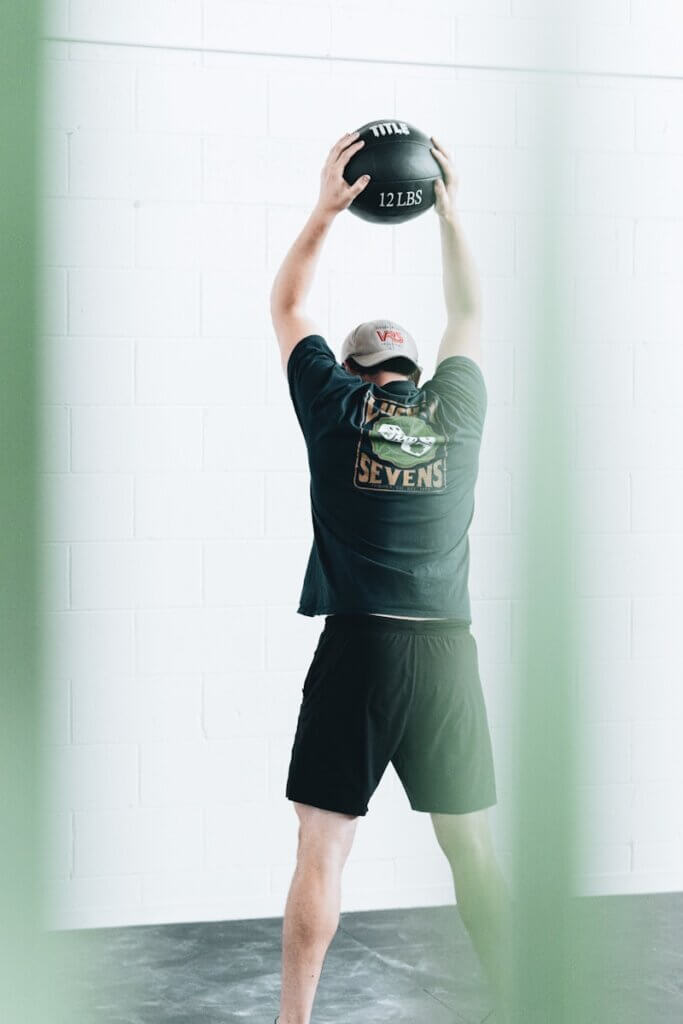Wall Ball

Introduction:
Get ready to take your CrossFit training to new heights with the wall ball exercise.
Wall balls are more than just a single exercise; they represent a versatile and effective training tool for building strength, endurance, and coordination. This compound movement targets multiple muscle groups simultaneously, including your legs, core, shoulders, and arms. By combining a squat with a high-powered throw, wall balls mimic real-life functional movements, making them ideal for athletes, fitness enthusiasts, and anyone looking to improve overall athletic performance.
Beyond strength development, wall balls also serve as an effective conditioning tool. Performing multiple repetitions at a high intensity pushes your cardiovascular system to its limits, enhancing metabolic conditioning and boosting your stamina. The dynamic nature of wall ball exercises makes them a staple in many CrossFit workouts and WODs, where speed, power, and endurance are essential.
Whether your goal is weight loss, muscle building, or simply enhancing athletic performance, wall balls deliver. They’re suitable for scaling, too—beginners can start with lighter balls and lower targets, while advanced athletes can challenge themselves with heavier weights and higher target points. This adaptability makes wall balls a valuable addition to any fitness routine.
Steps in the Wall Ball movement
- Starting Position: Stand facing a wall with your feet shoulder-width apart and a medicine ball held at chest level.
- Squat Down: Initiate the movement by squatting down, keeping your weight on your heels and your chest up.
- Drive and Throw: As you rise out of the squat, explosively drive through your legs and hips to propel the ball upward toward the target on the wall.
- Catch and Repeat: Catch the ball as it rebounds off the wall, immediately lowering back into a squat position to prepare for the next repetition.
What Equipment is needed for Wall Balls
- Medicine ball: Investing in a quality wall ball is crucial for maximizing your training experience. Not all wall balls are created equal, so here’s what to look for when purchasing one for your home gym or fitness space.
Weight Selection: Beginners may want to start with a lighter ball (between 6 to 10 pounds) to learn proper form. More experienced athletes can opt for heavier options (up to 20 or 30 pounds) for increased resistance and challenge.
Material and Durability: Look for a wall ball made from durable materials with reinforced stitching. The ball should maintain its shape even after repeated throws and impacts.
Grip and Texture: A good wall ball should have a non-slip, textured surface to ensure a secure grip, even when your hands are sweaty.
Versatility: Choose a ball that can withstand not only wall throws but also other movements like slams, core rotations, and weighted carries.
Whether you’re a beginner or a seasoned athlete, finding the right wall ball can make a significant difference in your training results.
- Wall target: Ensure the wall you’re throwing the ball against has a designated target area marked at an appropriate height for your skill level.
- Chalk for better grip on the Medicine Ball.
Check out the Equipment subsite for more tools, tips, and inspiration.

Shop Fitness gear now on Amazon
See Amazons extensive range of workout gear here. (Affiliate Link)
Scaling Options:
To gradually build strength and proficiency, consider the following scaling options:
- Lighter ball: Start with a lighter medicine ball to practice the movement pattern and build strength before progressing to heavier weights.
- Lower target: Lower the height of the target on the wall to reduce the distance the ball needs to travel, making the exercise more manageable.
- Decrease reps: Start with fewer repetitions per set and gradually increase as you build endurance and proficiency.
- Air Squats. Same movement as wall ball but without the wieght of the ball.
Benefits of the Movement:
- Builds lower body strength: Targets quadriceps, glutes, hamstrings, and calves.
- Enhances power and explosiveness: Develops the ability to generate force quickly, which is beneficial for sports performance and functional movement.
- Boosts cardiovascular endurance: Elevates heart rate and improves aerobic capacity with high-intensity, full-body movements.
Common Mistakes to Avoid:
- Poor Squat Form: Maintain proper squat mechanics throughout the movement by keeping your chest up, knees tracking over your toes, and weight on your heels.
- Incomplete Extension: Ensure you fully extend your hips and legs at the top of the movement to maximize power and height on the throw.
- Limited Range of Motion: Aim to squat to full depth, with your thighs parallel to the ground, to engage the muscles fully and achieve optimal results.
- Overarching the Lower Back: Many athletes lean too far backward during the throw, placing unnecessary strain on the lower back. Engage your core to maintain a neutral spine throughout the movement.
Throwing Too Early or Too Late: Timing is key. Initiate the throw as you drive up from the squat. Throwing too early can reduce power, while throwing too late can disrupt rhythm.
Lack of Target Focus: Always aim for a specific target on the wall. This helps maintain consistency and ensures that you’re working towards a measurable goal.
Correcting these mistakes will not only make your wall ball workouts safer but also significantly improve your efficiency and results.

Which Muscles Are Worked:
During this exercise, the following muscle groups are engaged:
- Primary Muscles: Quadriceps, glutes, hamstrings, calves, core
- Secondary Muscles: Shoulders, triceps, chest
Alternative Similar Movements:
If you’re seeking variation or targeting specific muscle groups, consider incorporating these alternative exercises:
- Thrusters – Wall Ball Thrusters: Perform a wall ball throw but add a full thruster movement by holding the ball overhead at the top of each squat.
- Wall ball variations (e.g., single-arm wall ball)
- Slam ball exercises: Instead of throwing the ball up, slam it down to the floor as hard as you can between reps. This engages your core and provides a different stimulus.
- Partner Wall Ball Toss: Work with a partner to toss the wall ball back and forth, alternating between squats and throws.
- Rotational Wall Ball Throws: Stand sideways to the wall and throw the ball with a twisting motion. This variation targets your obliques and enhances rotational strength.
- Air Squats

Shop Fitness gear now on Amazon
See Amazons extensive range of workout gear here. (Affiliate Link)
Wall Balls for Weight Loss and Conditioning
If fat loss and conditioning are your primary goals, wall balls should be a cornerstone of your training program. The combination of strength and cardio elements in wall ball workouts makes them a highly effective calorie-burning exercise.
The key to maximizing fat loss with wall balls is to focus on high-intensity interval training (HIIT) formats. Incorporating wall balls into circuits where you perform multiple exercises back-to-back with minimal rest can skyrocket your heart rate and keep your metabolism elevated long after the workout is over.
For example, a simple but effective HIIT routine could involve performing 30 seconds of wall balls followed by 30 seconds of rest, repeated for 5-10 rounds. You can also include wall balls in longer WOD-style circuits with exercises like burpees, kettlebell swings, and box jumps for a full-body metabolic boost.
Additionally, wall balls help build lean muscle mass, which further supports fat loss by increasing your resting metabolic rate. With consistent practice and proper nutrition, wall ball training can be a game-changer for achieving your weight loss goals while also improving strength and athletic performance.
Q&A for Wall Balls
Are wall balls a good exercise?
Yes, wall balls are excellent for building full-body strength, power, and cardiovascular endurance. They engage multiple muscle groups and elevate your heart rate, making them an effective functional exercise.
How long does it take to do 50 wall balls?
The time it takes to do 50 wall balls varies depending on your fitness level and pace. On average, it can take anywhere from 2 to 5 minutes.
How to properly do a wall ball?
Refer to the “Steps in the Wall Ball Movement” section for a detailed guide on performing wall balls with correct form. Key points include maintaining good squat mechanics and fully extending at the top of the movement.
Why are wall balls so hard?
Wall balls are challenging because they require simultaneous use of your legs, core, and upper body, demanding both strength and coordination. The high-intensity nature of the exercise also elevates your heart rate significantly.
Do wall balls burn fat?
Yes, wall balls can help burn fat as they are a high-intensity, full-body exercise that increases your heart rate and boosts metabolic conditioning.
How heavy should my wall ball be?
The weight of your wall ball should challenge you but still allow you to maintain proper form. For beginners, a 6-10 pound ball is recommended, while more advanced athletes might use a 14-20 pound ball.
Do wall balls work the chest?
Yes, wall balls do engage the chest muscles, particularly during the throwing phase when you push the ball upward.
How many wall balls should you do?
The number of wall balls you should do depends on your fitness level and workout goals. A common range is 3 sets of 10-15 repetitions, but advanced workouts might include higher rep counts.
How many kg is a 14lb wall ball?
A 14-pound wall ball is approximately 6.35 kilograms.
What exercise can I do instead of wall balls?
Thrusters, slam ball exercises, and air squats are good alternatives to wall balls. Each of these exercises targets similar muscle groups and provides a comparable workout.
Do wall balls work abs?
Yes, wall balls work the abs as part of the core engagement required to maintain stability and power during the squat and throw phases.
What workout is 150 wall balls?
The workout “Karen” in CrossFit consists of 150 wall balls for time. It’s a benchmark workout designed to test your strength, endurance, and mental toughness.
Conclusion:
Mastering the wall ball exercise is not just about building strength; it’s about developing explosive power, endurance, and resilience that will translate into improved performance in all areas of your fitness journey. So, embrace the challenge, stay focused, and let the wall ball become your secret weapon for unlocking your full potential.

Shop Fitness gear now on Amazon
See Amazons extensive range of workout gear here. (Affiliate Link)
